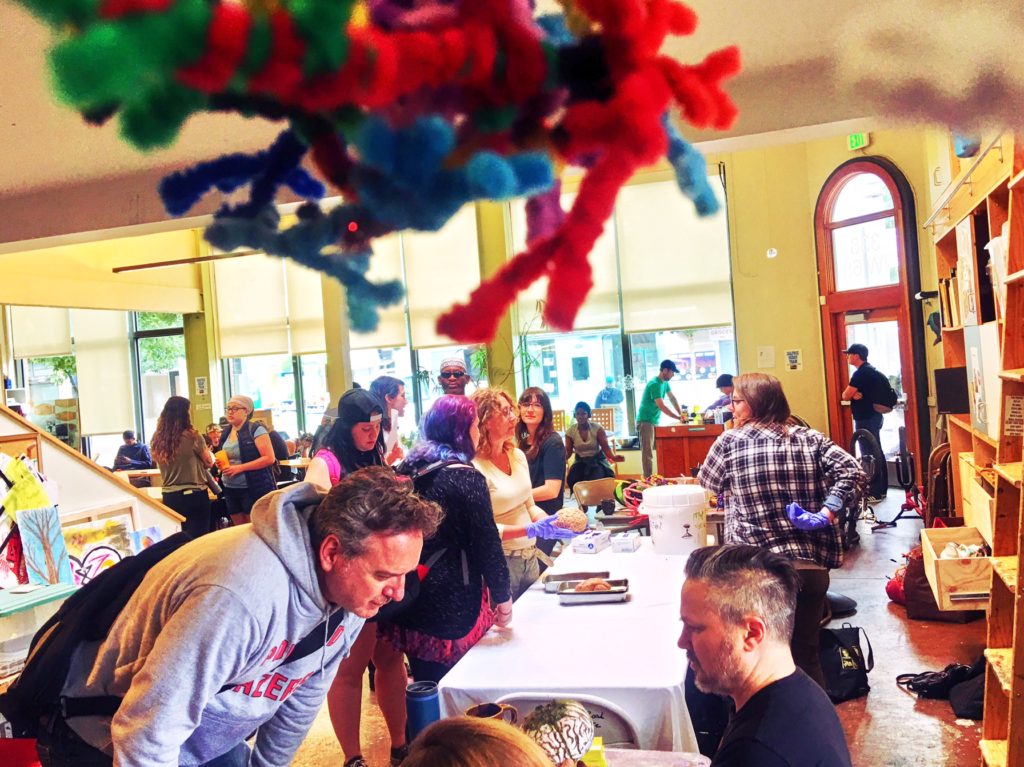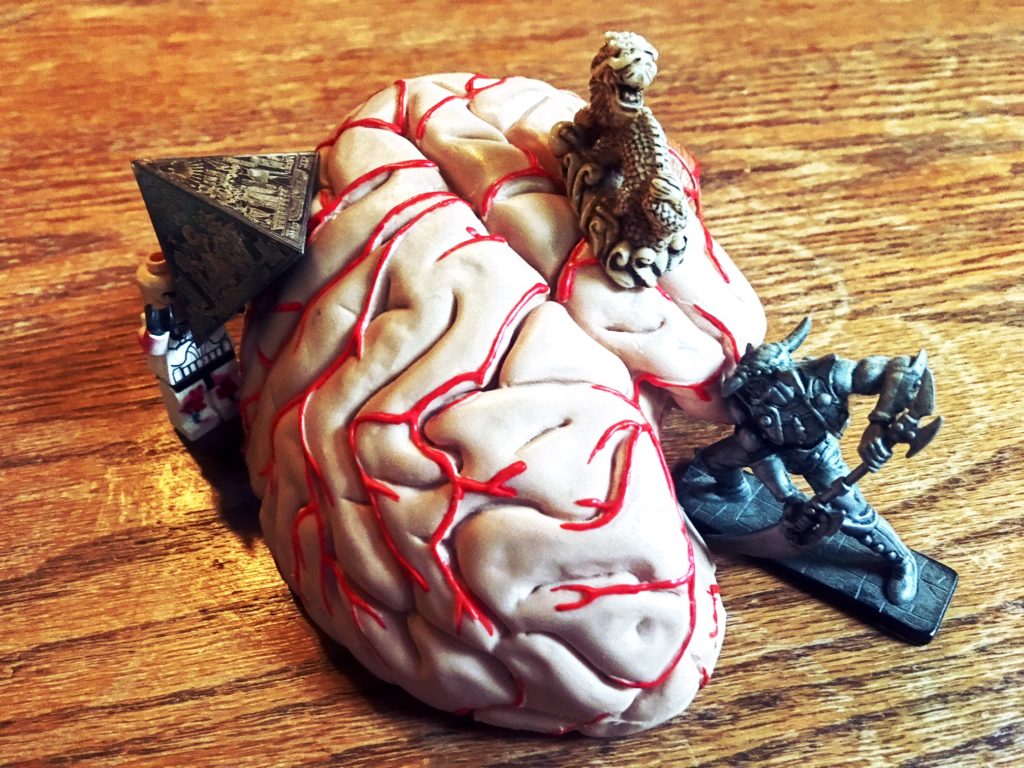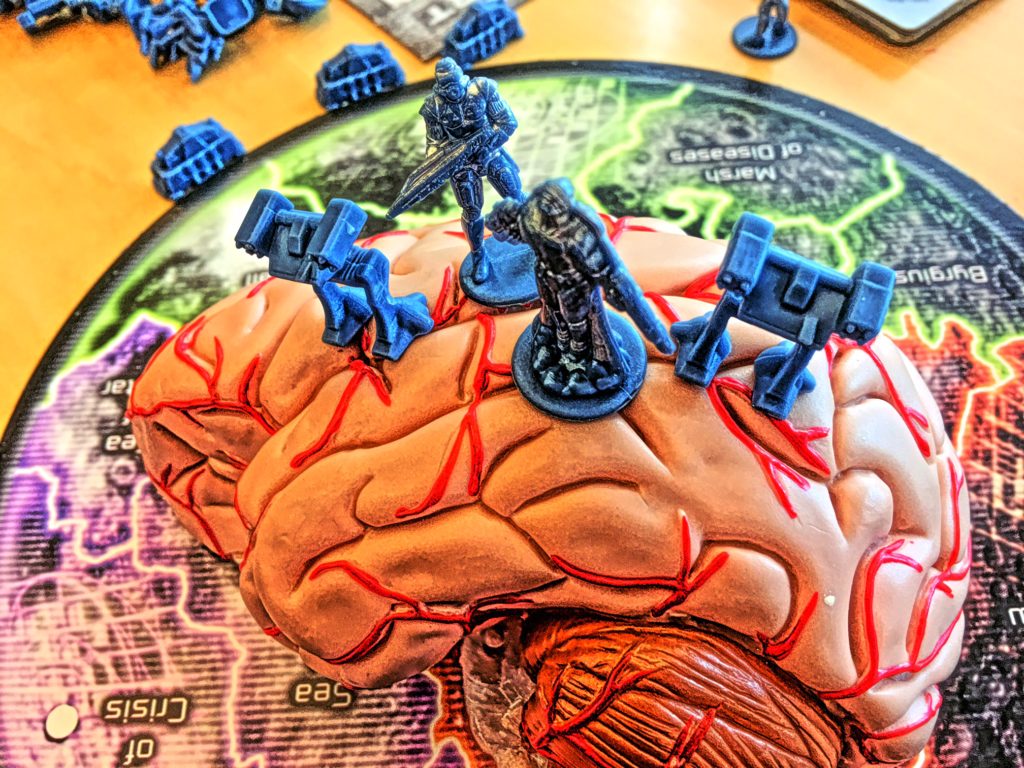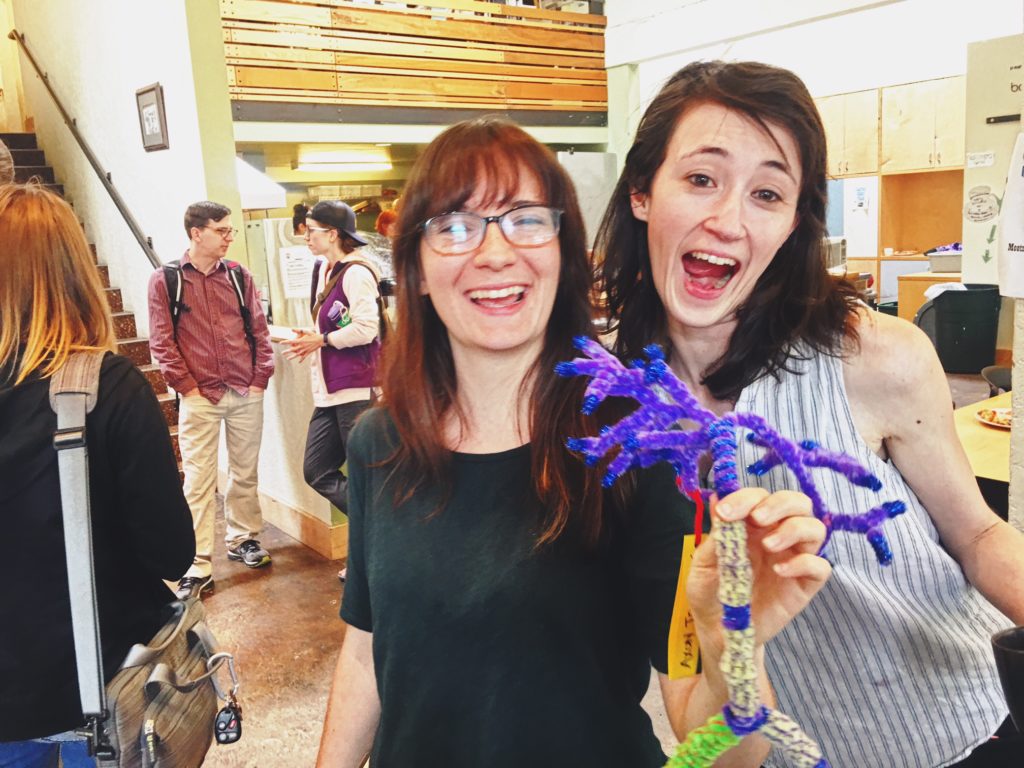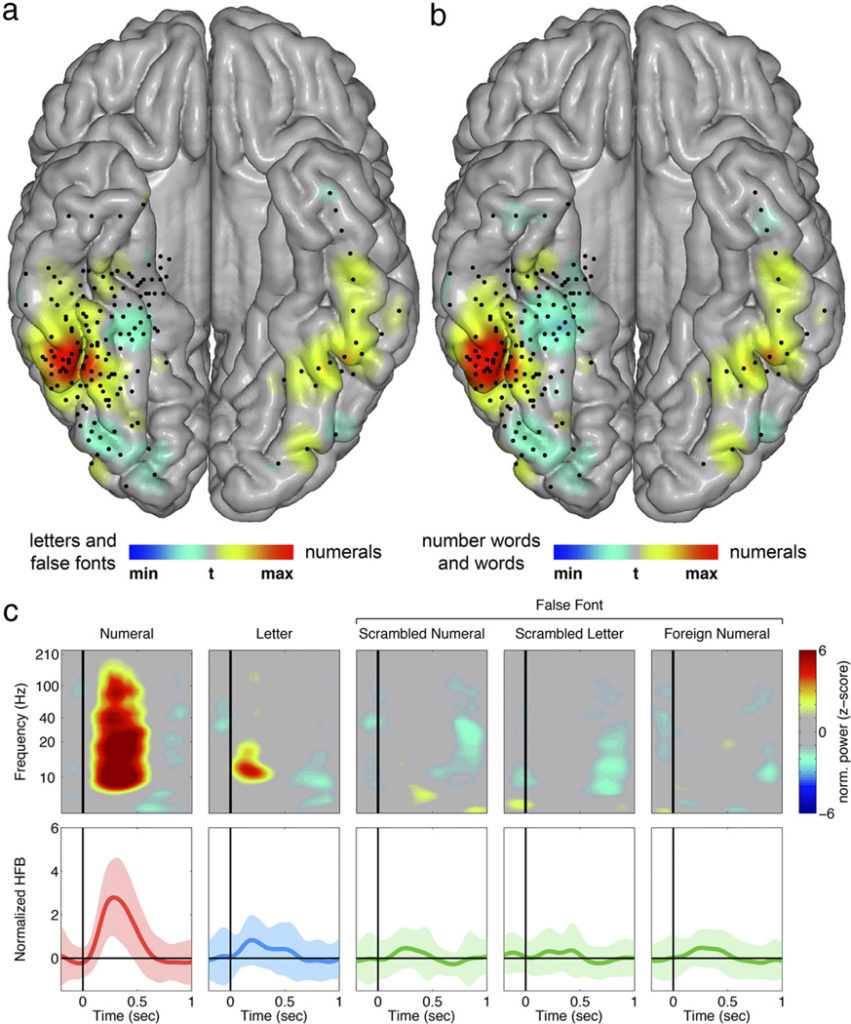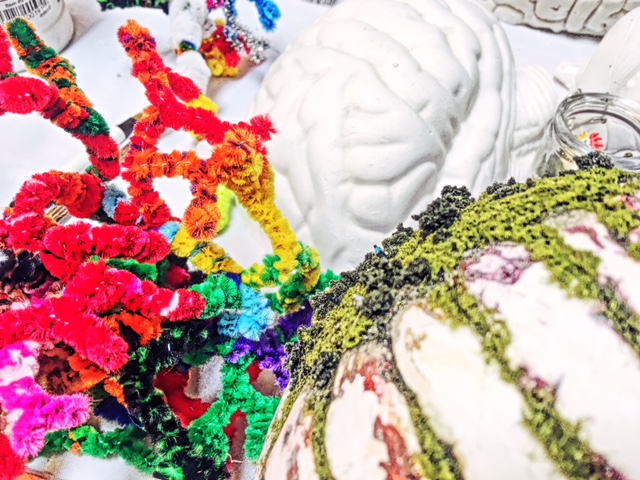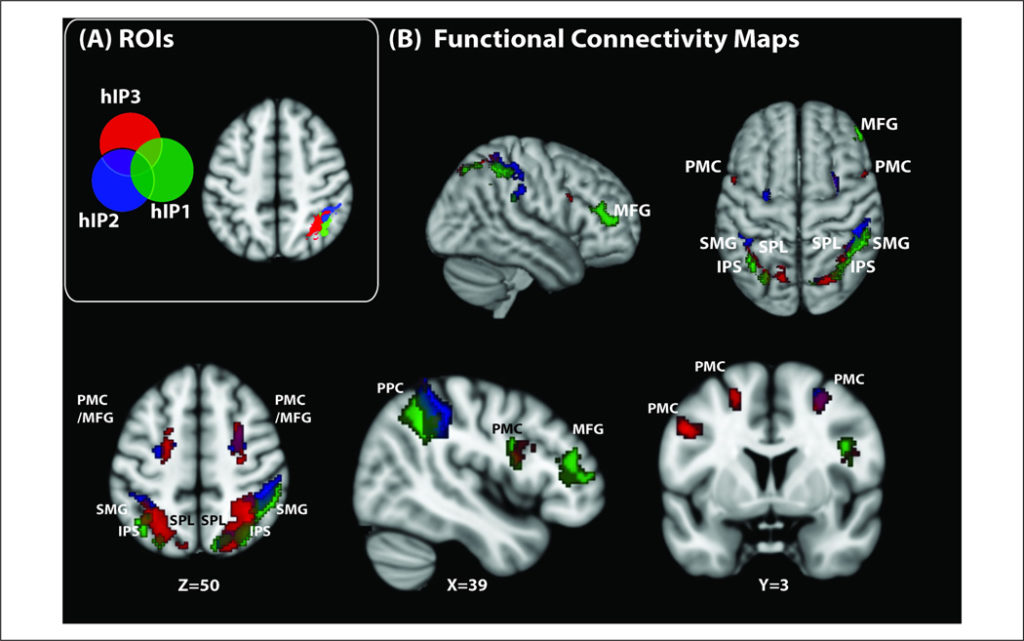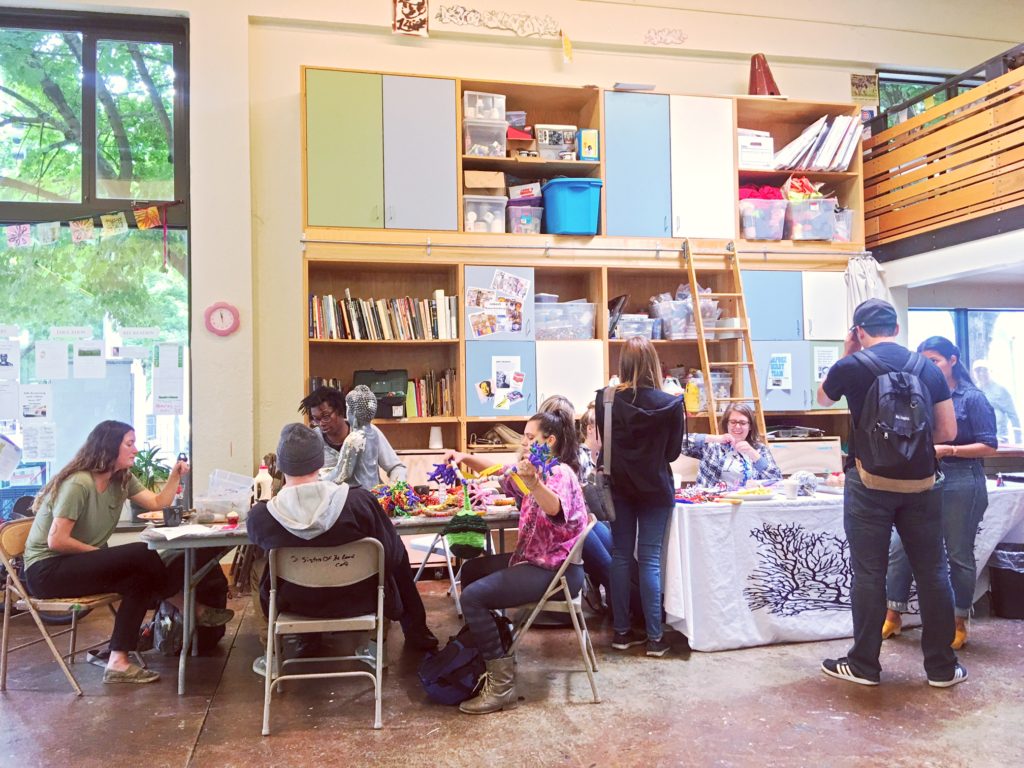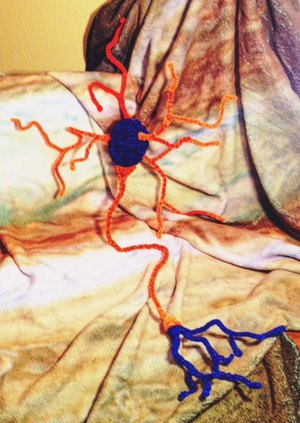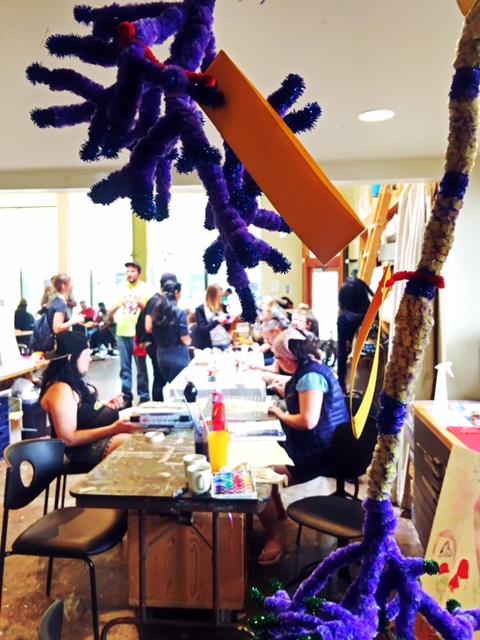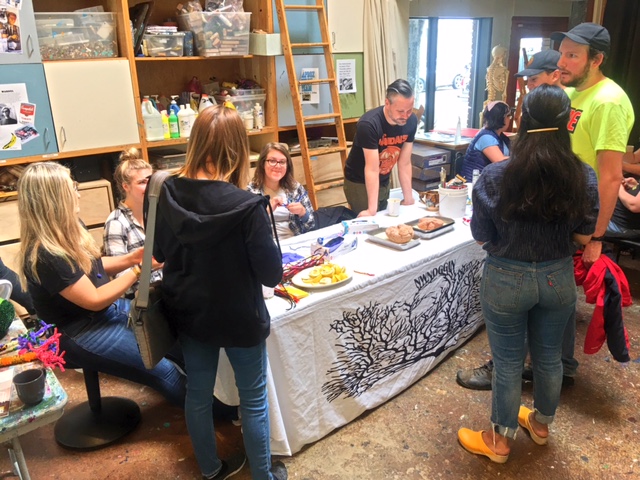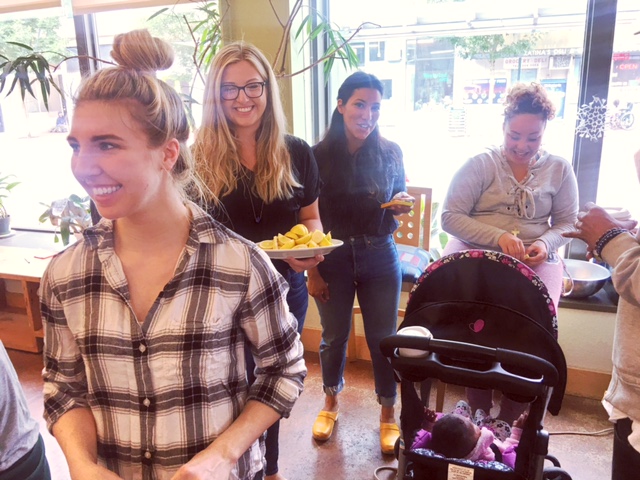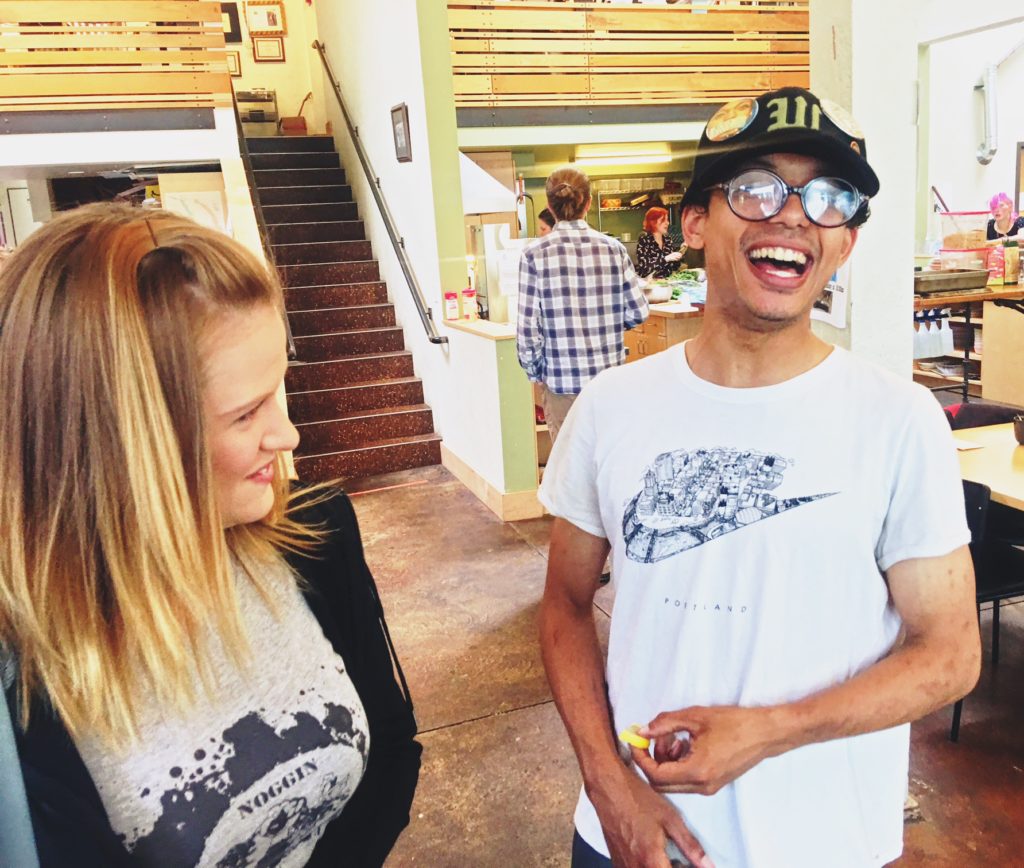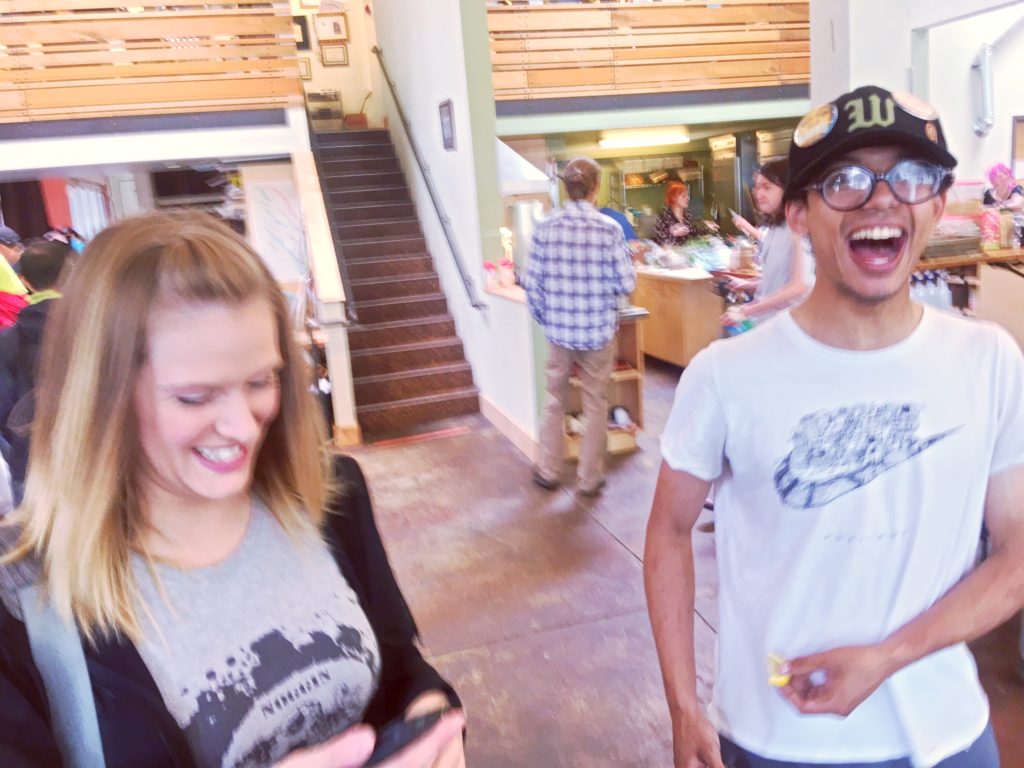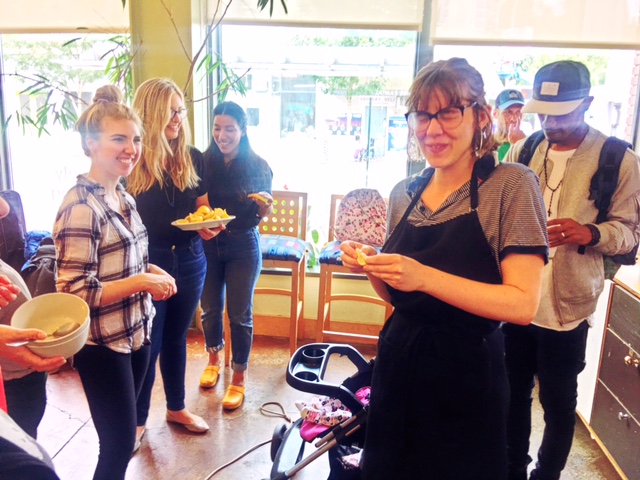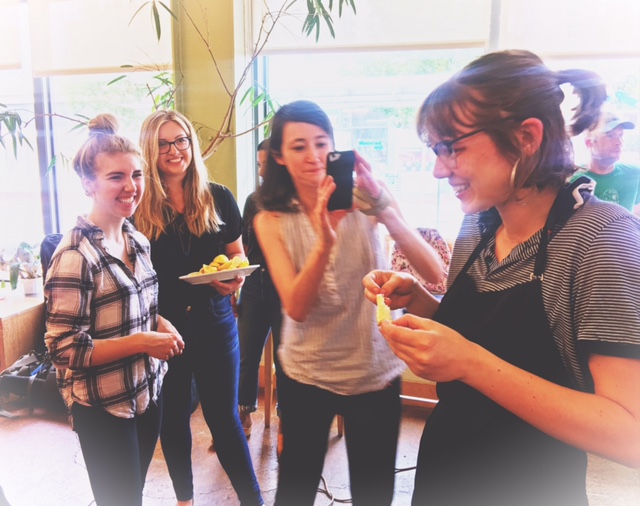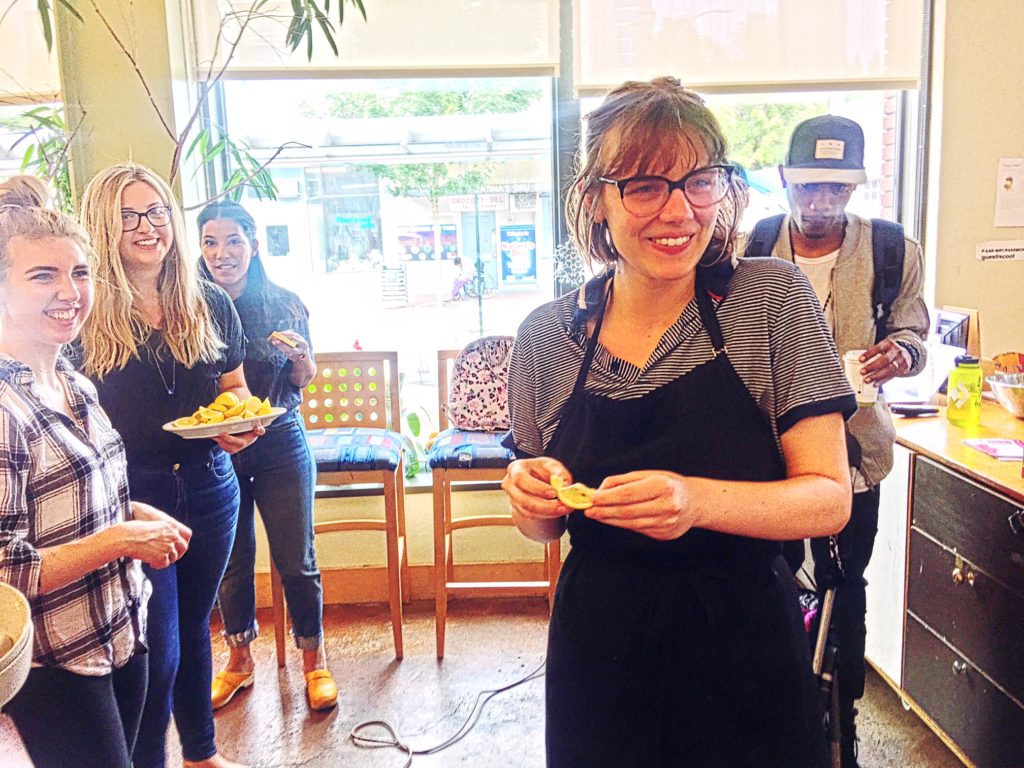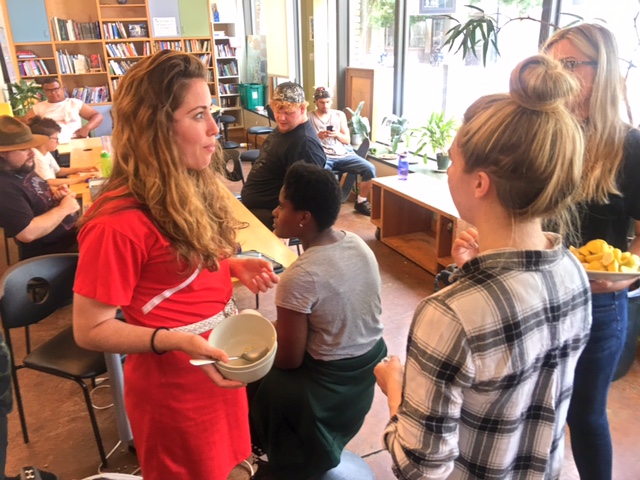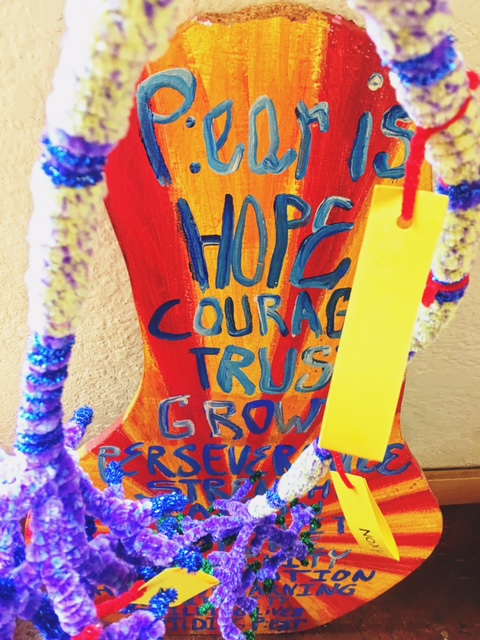“There is no real independent self, aloof from other human beings, inspecting the world, inspecting other people. You are, in fact, connected not just via Facebook and Internet, you’re actually quite literally connected by your neurons.”
— Vilayanur S. Ramachandran
SAVE THE DATE: October 19th set for Homelessness and the Brain!
Details: Homelessness and the Brain
Noggin returned to our friends at p:ear for a second day of art, neuroscience, and planning for a proposed public Homelessness & the Brain event this fall, aimed at connecting young researchers studying the brain at PSU, OHSU and elsewhere with clinicians from Central City Concern, policy makers, and the talented and often unhoused young people at this essential Portland nonprofit…
LEARN MORE: In an old Tri-Met bus on a landfill…
We were joined today by a welcome crowd of community minded volunteers, including Gil Brady, Katricia Stewart, Larry Martinez, Nick Smith, Jennifer Jensen, Jordan Ray, Rebekah Hough, Mitch Fennimore and Aliese Poole from Psychology at Portland State University, Kim Engeln and Sam Carpenter from OHSU, Elsa Gomez from Portland Community College, and Noggin Resource Council member Christina Williams…
Arts Coordinator Jeff Leake field tested a new project, creating striking landscapes of where we sleep (and where young people find temporary shelter) directly on top of plaster cerebral casts…
Things seen or experienced or spoken of might reside above the temporal lobes, critical for recognizing objects, naming them, and remembering, while spatial aspects of sleep locations could be creatively depicted over parietal regions. Complex social decisions could be inventively represented on top of the frontal lobes behind our forehead…
Today we were also thrilled to meet Karissa Moden, the Systemic Change Director at Sisters of the Road, a nearby nonprofit that offers nourishing meals in a safe and dignified space for people of all ages, and Ibrahim Mubarak, who organized both the Right 2 Dream Too homeless rest camp and Dignity Village, and who now advocates for the houseless on their civil, human, and constitutional rights through a nonprofit known as Right 2 Survive PDX.
We are hugely excited about contributing to community engagement and action by scientists, artists, clinicians, advocates, policy makers and the houseless themselves around the clear need for safe, accessible and affordable homes for all. Good sleep is required for a healthy brain, which is essential for mental health and our ability to thrive in our own community.
LEARN MORE: Amyloid awakenings
LEARN MORE: Noggins in Nod: The science of sleep
We spoke with some extraordinary young people with compelling backgrounds and stories – and some unique skills! One young man wowed everyone with his astonishing calculating ability…
He’d been in a car accident several years earlier, and suffered a traumatic brain injury, which left him with noticeable changes in vision (he found that the perceptual quality of colors had altered significantly), metabolism, and his appreciation for the relative value of different numbers…
Yet despite some issues with counting, he had learned an algorithm allowing him to quickly multiply any number you’d suggest by the same number of 9’s; for example, he’d tell you that 4465 (a number you might offer him on the spot) x 9999 equals 44,645,535 – and he’d produce that answer faster than you could enter those digits in a calculator!
LEARN MORE: Vedic Math – Multiplication of numbers with a series of 9’s
We talked about areas of the brain important for number sense, and calculation, including evidence for a selective number recognition region in the inferior temporal lobe. This area is part of the visual “what” pathway in the temporal lobes important for recognizing objects, including a 1, 2, 3, etc.).
LEARN MORE: A Brain Area for Visual Numerals
LEARN MORE: The ventral visual pathway
IMAGE: A specific area of the temporal lobes is active when we identify numbers. This image is based on data from seven epileptic patients with electrodes implanted in their brains to record the potential onset of seizures. (Most of these electrodes were implanted in the right hemisphere; with more electrode coverage you might see another similar area of activation in the left hemisphere as well)…
In contrast, that “sense of numbers,” or numerosity – our ability to compare differing amounts and quickly intuit which is larger, or smaller – seems to rely on a dedicated brain network linking regions in the parietal and frontal lobes. Numerosity is an ability that we share with other primates, too…
LEARN MORE: Neuronal correlates of a visual “sense of number” in primate parietal and prefrontal cortices
IMAGE: A brain area known as the intra-parietal sulcus (or IPS) is highly involved in both math and numerosity, and is functionally linked to additional regions in both parietal and frontal lobes. These math-related brain circuits have been identified using an imaging technique known as rs-fcMRI.
EXPLORE MORE: Neurobiological Underpinnings of Math and Reading Learning Disabilities
There have also been reports of individuals with traumatic brain injury who suddenly acquire extraordinary skills – called savant skills – in music, art, mechanical and spatial understanding, and also math. But how does this occur? One idea put forth by Allan Snyder, the Director of the Centre for the Mind at the University of Sydney, Australia, is that injury to regions that rapidly process lower level stimulus information into higher order concepts and ideas (from number recognition, say, to numerosity) lets details that we normally discard become accessible…
LEARN MORE: Explaining and inducing savant skills: privileged access to lower level, less-processed information
Art appears to unlock latent abilities too (and without TBI)…
We see this in our Perception/Art & Brain classes at PSU, where asking non-artists to copy an image often generates more interesting, accurate and better results if the person drawing is not certain of what exactly that image is. If they are told it is a face, for example, they appear to reference internal archetypes of what they think standard eyes, noses and mouths look like (think object recognition areas of temporal lobes) without really perceiving the lines and shadows of the image itself…
Today we also enjoyed demonstrating an unusually delicious link between our brain structure and function – the role of our taste receptor cells, which detect chemicals in food, on our perceptual experience of flavor…
Sweet taste receptor cells on your tongue build sweet taste receptor proteins, which they embed in their own cell membranes. These proteins bind the glucose, sucrose, and fructose in food, and the cells respond with electric currents that rush back along cranial nerves to our brains.
At p:ear, we decided to mess with those receptors, by offering a pill containing miraculin – a remarkable chemical from a berry native to West Africa. If your mouth has a neutral pH, miraculin binds to these sweet protein receptors and prevents them from responding to sugar. The tablet itself, as you swirl it over your tongue, can taste bland, like cardboard…
However, if the pH drops, as it does when you introduce something sour, like a lemon, all of those miraculin-bound sweet taste receptors activate at once, generating massive current coursing back to your brain with the unexpected message of “SWEET!”
Sometimes it was too sweet! Lili, the talented chef at p:ear, was definitely a little surprised!
This was a popular activity, and our outreach volunteers engaged with many folks at p:ear, testing the effect and explaining the underlying neurophysiology…
LEARN MORE: Lemon candy @ P:ear
We are planning a return to p:ear in July (check the NW Noggin calendar of events for details), and are continuing to organize Homelessness and the Brain for fall. Many thanks to Sarah Louise Allen and all the staff and young people at p:ear for welcoming our Noggin volunteers!



